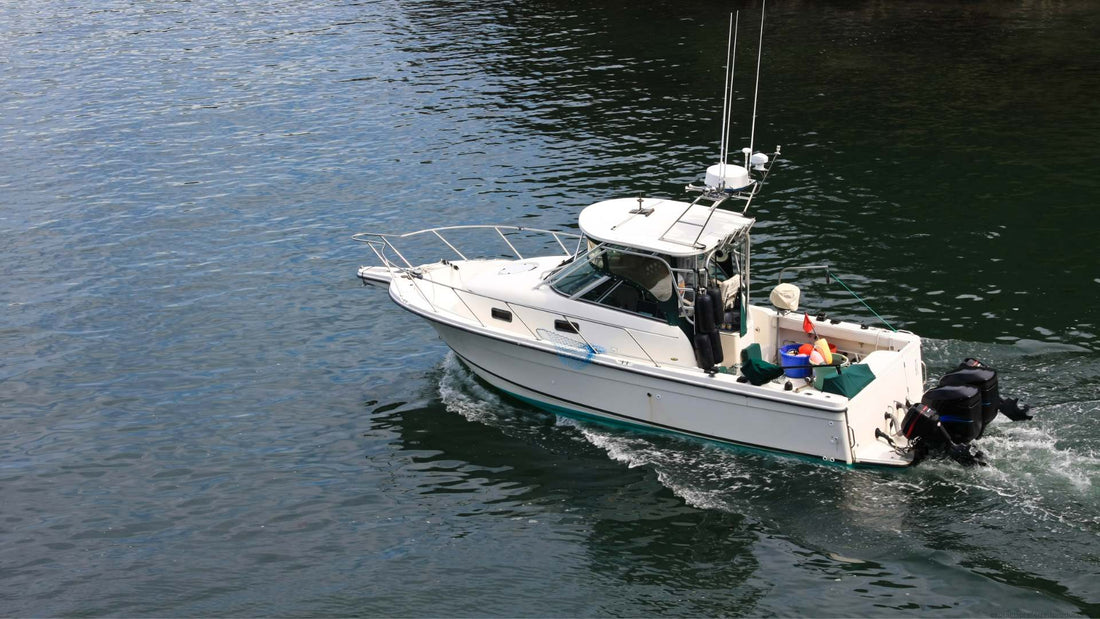
What Is Boat Trim? A Comprehensive Guide for Boaters
Nicholas HeislerShare
If you're a boater or mariner, understanding boat trim is one of the most essential skills to ensure smooth sailing. Whether you're an experienced captain or new to the boating world, mastering boat trim is critical for improving performance, enhancing fuel efficiency, and keeping your passengers safe. But what exactly is boat trim, and why does it matter?
In this comprehensive guide, we'll cover everything you need to know about boat trim, including what it is, why it's important, and how to adjust it effectively. By the end of this article, you'll have the knowledge and confidence to make your boating experience more enjoyable and efficient.
Understanding the Basics of Boat Trim
What Does "Trimming a Boat" Mean?
Trimming a boat refers to the process of adjusting its angle in the water, both longitudinally (front to back) and laterally (side to side). Proper trim helps optimize the boat's performance, ensuring that it glides smoothly through the water instead of plowing or dragging.
In essence, trimming your boat involves finding the ideal balance that minimizes resistance, improves fuel efficiency, and provides a comfortable ride for everyone on board.
Key Components of Boat Trim
Several factors influence boat trim, including:
1. Trim Tabs:
- Small, adjustable metal plates attached to the bottom of the boat's transom.
- Help control the boat's angle and stability, especially in choppy water.
2. Outboard Motor Trim:
Found on boats with outboard motors, allowing you to adjust the motor's angle relative to the boat.
3. Weight Distribution:
The placement of passengers, gear, and fuel can significantly impact the trim.
The Science Behind Trim
When a boat is in motion, water resistance and weight distribution create forces that affect its position in the water. Proper trim ensures that these forces are balanced, reducing drag and improving efficiency. This balance not only saves fuel but also makes the ride smoother and more comfortable for everyone aboard.
Why Proper Boat Trim Matters
Enhanced Fuel Efficiency
One of the biggest benefits of proper boat trim is improved fuel efficiency. A poorly trimmed boat creates excessive drag, forcing the engine to work harder and burn more fuel. By adjusting the trim, you can reduce resistance and ensure that your boat moves efficiently through the water.
Improved Stability and Safety
Incorrect trim can cause your boat to pitch or lean excessively, which can be dangerous in rough conditions. Proper trim enhances stability, ensuring that your boat remains level and easier to control.
Optimal Speed and Performance
A well-trimmed boat achieves higher speeds with less effort. By minimizing drag, you'll get the most out of your engine and enjoy a more exhilarating ride.
Better Ride Quality
No one enjoys a bumpy or uncomfortable ride. Proper trim helps your boat handle waves and choppy water more effectively, ensuring a smoother experience for everyone on board.
How to Adjust Boat Trim
Manual Adjustments
For smaller boats without trim tabs or adjustable motors, weight distribution plays a critical role. Here's how you can manually adjust trim:
- Shift Passenger Weight: Ask passengers to move forward or backward to balance the boat.
- Redistribute Gear: Move heavy items, such as coolers or fishing equipment, to achieve a more even weight distribution.
- Monitor Fuel Tanks: On larger boats, uneven fuel levels can affect trim. Use your fuel strategically to maintain balance.
Using Trim Tabs
Trim tabs are an invaluable tool for adjusting boat trim. These small metal plates can be controlled using a switch at the helm, allowing you to fine-tune the boat's angle while underway.
How Trim Tabs Work:
- Pressing the port (left) trim tab lowers the bow on the starboard (right) side, and vice versa.
- Use small adjustments to find the ideal balance and correct any listing (leaning to one side).
Common Scenarios for Trim Tab Use:
- Rough Waters: Lower the bow slightly to cut through waves.
- Uneven Loads: Adjust the trim tabs to compensate for passengers or gear concentrated on one side.
Adjusting Outboard Motor Trim
For boats with outboard motors, the trim control allows you to tilt the motor up or down, which changes the boat's angle in the water.
Steps for Adjusting Outboard Motor Trim:
1. Trim Down:
- Lowers the bow and improves stability, especially in rough waters.
- Useful for getting on plane (when the boat lifts out of the water).
2. Trim Up:
- Raises the bow and reduces drag, increasing speed and fuel efficiency.
- Ideal for calm waters and higher speeds.
Experiment with the trim control to find the best position for your boat's speed and water conditions.
Boat Trim in Different Water Conditions
Flat Water
In calm conditions, aim for a slightly upward bow angle. This reduces drag and allows for maximum speed and efficiency.
Choppy Water
When navigating choppy or rough waters, lower the bow slightly using trim tabs or the motor trim. This helps the boat cut through waves and improves stability.
Heavy Wind or Waves
In adverse conditions, prioritize safety and control. Keep the bow low to prevent it from being lifted by waves or wind, which could compromise stability.
Troubleshooting Common Trim Issues
Bow Riding Too High or Low
- Problem: Excessive bow rise or plowing through the water.
- Solution: Adjust the trim tabs or motor trim. Redistribute weight to balance the boat.
Uneven Trim Causing a Lean
- Problem: The boat leans to one side, often due to uneven weight distribution.
- Solution: Use trim tabs to level the boat. Move passengers or gear to the opposite side.
Excessive Spray or Drag
- Problem: Water sprays excessively or the boat feels sluggish.
- Solution: Adjust the motor trim to reduce drag. Check for obstructions or unnecessary weight.
Tips for Perfecting Boat Trim
1. Practice Makes Perfect:
Spend time experimenting with different trim settings in various conditions.
2. Monitor Performance Indicators:
Pay attention to RPM, speed, and fuel consumption to assess the impact of trim adjustments.
3. Distribute Weight Evenly:
Keep the boat balanced to minimize the need for constant adjustments.
4. Use Technology:
Invest in tools like GPS and fuel monitors to track improvements in performance and efficiency.
5. Start Small:
Make small adjustments to the trim and observe the effects. Over-correcting can cause new issues.
Frequently Asked Questions About Boat Trim
How Do I Know If My Boat Trim Is Correct?
A well-trimmed boat will:
- Ride smoothly with minimal spray.
- Achieve optimal speed and fuel efficiency.
- Stay level without excessive bow rise or listing.
Can Boat Trim Affect My Fuel Consumption?
Yes! Proper trim reduces drag, allowing your engine to work more efficiently and consume less fuel.
Is There an Ideal Trim Setting for All Conditions?
No, trim settings vary depending on factors like water conditions, speed, and weight distribution. Experiment to find what works best for your boat in each scenario.
Understanding and mastering boat trim is essential for any boater or mariner. From improving fuel efficiency to enhancing safety and ride quality, proper trim makes a significant difference in your overall boating experience. By learning how to adjust trim tabs, motor trim, and weight distribution, you can optimize your boat's performance and enjoy smoother, more efficient journeys.
When it comes to keeping your boat clean and tidy, look to Captains Preferred Products' washdown hoses and nozzles. Find everything you need to keep your vessel squeaky clean all season—always at the best prices.




